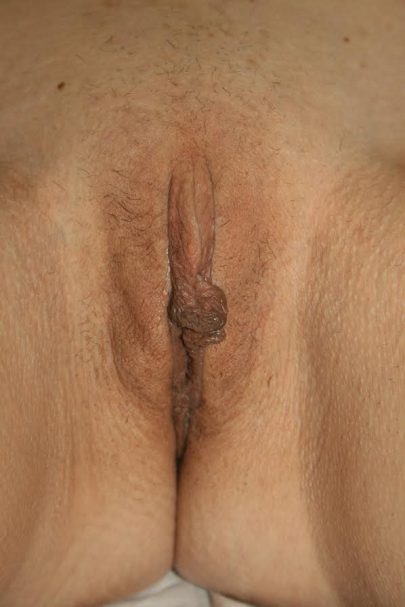Labiaplasty (Vaginal Rejuvenation)
 Patients seeking to improve the look and feel of the labia minora can benefit from labiaplasty at Copeland Cosmetic Surgery. Board-certified plastic surgeon Jeffrey Copeland, MD is highly skilled in this delicate procedure, and provides respectful, personalized, and considerate care to each of his patients.
Patients seeking to improve the look and feel of the labia minora can benefit from labiaplasty at Copeland Cosmetic Surgery. Board-certified plastic surgeon Jeffrey Copeland, MD is highly skilled in this delicate procedure, and provides respectful, personalized, and considerate care to each of his patients.
- What Is Labiaplasty?
- Labiaplasty Benefits
- Labiaplasty Candidates
- Labiaplasty Procedure
- Labiaplasty Recovery
- Labiaplasty Results
- Labiaplasty Cost
- Additional Labiaplasty FAQs
What Is Labiaplasty?
Labiaplasty, also known as labial reduction surgery, is an increasingly popular procedure designed to reduce and reshape large redundant labia minora (the tissue surrounding the vaginal opening). In certain situations, redundant skin of the clitoral hood may also be removed. Difficult childbirth, genetics, and age are common causes of this problem.
What Are the Benefits of Labiaplasty?
Women with large labia often experience sexual discomfort, and labiaplasty can provide them with a renewed sense of confidence and improved self-image. In addition, large labia minora can interfere with exercising, and wearing certain clothing can be extremely uncomfortable. Reduction of the labia minora can make physical activity more enjoyable and clothing choices easier. Additional goals and benefits can include:
- Repair of a torn or stretched labia minora
- Revitalization of the appearance of the external female genitalia
- Production of a more proportionate relationship between labia minora and labia majora
- Improvement of feminine hygiene
- Providing increased ability to wear tight clothing more comfortably and confidently
- Enhancement of sexual enjoyment
- Positive modification of the shape, size, and/or symmetry of the labia minora
- Reduction of excess tissue of the clitoral hood, which can alter function
Who Is a Candidate for Labiaplasty?
Candidates for labiaplasty are typically women who experience physical discomfort or self-consciousness due to enlarged or asymmetrical labia minora. They may have irritation during exercise, pain with sexual activity, hygiene challenges, or difficulty wearing certain clothing. Some women choose labiaplasty purely for aesthetic reasons to enhance the appearance of their genital area and boost self-confidence. Candidates should also be in good overall health and free of untreated infections or medical conditions that could affect healing.
A consultation with Dr. Copeland can help determine if labiaplasty is right for your individual needs and goals.
How Is the Labiaplasty Procedure Performed?
During the labiaplasty procedure, Dr. Copeland will carefully remove excess tissue and reshape the labia. Each patient has their own unique needs and goals, so the specific surgical technique employed may vary. The two most commonly used techniques are the wedge technique and the marginal trim method. If the wedge method is indicated, triangular sections of tissue are removed, and the remaining edges are reconnected to create a tighter, more rejuvenated appearance. The trim method involves reshaping the labia by eliminating excess tissue along the outside perimeter. Both methods have benefits and drawbacks; Dr. Copeland will discuss these with you in detail during your consultation and can determine which approach is most appropriate for obtaining the best possible outcome. The surgery may be done in the office with local anesthesia and light sedation. It usually takes about an hour or less to complete the procedure.
What Is Labiaplasty Recovery Like?
Depending on your individual case, Dr. Copeland will provide you with specific instructions for proper post-surgical care. Generally speaking, though, most patients are able to return to work within three to five days, and patients should abstain from sexual activity for four to six weeks following surgery. Applying ice packs to the treatment area during the first few days after surgery can help reduce swelling, bruising, and soreness. Dr. Copeland may also prescribe topical and/or oral medications, which should be used as directed to help minimize the risk of infection. Additionally, any discomfort during recovery can usually be managed with pain medication, as needed. Typically, when fully healed, the incisions are barely noticeable, and results are long-lasting. Most patients are extremely happy with their outcome and enjoy the newfound confidence and comfort it provides them. Ultimately, to ensure successful results, it is crucial to carefully follow all aftercare instructions and attend all post-operative check-ups with Dr. Copeland.
Labiaplasty Results Gallery
How Much Does Labiaplasty Cost?
Depending on the specifics of your personalized surgical plan, the overall price of labiaplasty can vary — however, on average, most patients can expect to pay approximately $4,400 – $4,800. The overall final cost will depend on several variables, such as the complexity of the case, anesthesia, medications, pre- and post-operative testing, the surgeon’s fee, and more. To get a more personalized price estimate for your labiaplasty procedure, please schedule a consultation with Dr. Copeland. In your consultation, Dr. Copeland can determine the surgical approach that can best meet your needs, and provide you with a personalized quote. To help make the cost of labiaplasty more manageable for our patients, we offer financing options through CareCredit®, enabling qualified patients to make monthly payments with little or no interest. If you would like to finance your procedure, please let us know — our staff can provide you with the necessary information and help you apply.
Additional Labiaplasty Frequently Asked Questions
Is labiaplasty covered by insurance?
Labiaplasty is typically considered a cosmetic procedure and, as such, is not covered by insurance. However, if the surgery is medically necessary, such as to relieve significant pain, irritation, or functional problems, some insurance plans may offer partial or full coverage.
How permanent are labiaplasty results?
While labiaplasty results are generally long-lasting and often permanent, factors such as natural aging, hormonal changes, pregnancy, and childbirth can potentially alter the appearance over time. Minor changes may occur as part of the natural aging process, but most patients remain satisfied with their results for many years. Maintaining a stable weight, practicing good hygiene, and carefully following post-operative instructions can help preserve your outcome.
When can I resume physical activities following labiaplasty surgery?
Most patients can resume light activities within a few days, but should avoid strenuous exercise, sexual activity, and heavy lifting for at least four to six weeks. Walking is usually encouraged early on to promote circulation, but activities that place pressure on the surgical area, including cycling or running, should be postponed until Dr. Copeland clears you.
Contact Us
Contact our office to learn more about labiaplasty during a consultation with Dr. Copeland.


